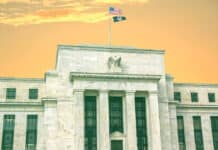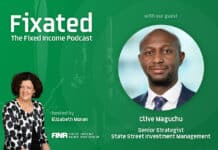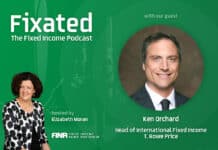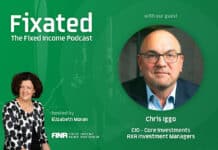
Passive investment flows are changing markets. This is a part transcript from the Jana Investment Advisors Conference, where Steve Boothe, who is Head of Global Investment Grade Credit from T. Rowe Price, discusses the implications of passive investment.
Summary
- There has been a significant shift towards passive investment, with passive funds now making up around 50% of equity assets and 30% of fixed income assets. This trend is driven by the rise of ETFs and target date funds.
- The growth of passive investing is impacting market structure and dynamics. Passive funds must trade to replicate indexes, unlike active managers who have more flexibility. This increases market inelasticity and makes markets more sensitive to flows.
- The growing dominance of passive investing can mechanically inflate asset prices, as passive funds must buy securities regardless of valuation. This is squeezing risk premiums, especially in higher quality credit segments.
- The rise of passive investing also has implications for active management strategies, as it reduces the opportunity set for alpha generation, especially in small-cap and value-oriented strategies that tend to be underweighted in passive indexes.
Q. What has changed over the last 10-20 years given the rise of passive investment?
Approximately half of the equity investment flow goes into some form of a passive product. I would argue that number is a little underestimated because it fails to account for things like futures, total return swaps, etc. But the reality is that the marginal dollar coming into markets is passive.
This trend is very similar in the bond market, but a few years behind.
I think what might be a little underappreciated here is the hand-in-hand relationship of the ETF ecosystem and passive investment. There are approximately US$8 trillion in global ETFs, US$7 trillion in the U.S. and US$6 trillion is within a passive framework
Within the U.S., your most popular retirement savings vehicle is a product known as a target date product. Of the US$12 trillion in 401(k) or retirement saving assets, four of that is via a target date product. Guess how much of that is passive? 50%.
There is an increasing link between passive investing and the labor market. You have a job, you have income, you put it into a passive product.
We’ve all heard some version of the increasingly concentrated nature of equity indices. I’m not saying passive is driving this dynamic. What I am saying is that when you invest in a passive product, you’re investing in a concentrated vehicle. It is pretty obvious. And the bond market? I’m going to speculate here a little bit because we don’t quite have this concentrated nature in our market yet.
A growing concern that I have is, and you’re starting to see this trend surface coming out in 2022, there’s duration coming out of credit markets. Issuers are increasingly issuing in the front end of the curve. That’s where passive flow exists.
Also read: Global IG Under the Microscope
As passive ETFs grow, you’re seeing the liquidity premium come out of credit indices. I think there’s a direct linkage here. As more and more flow comes into the market via a passive structure, liquidity premium comes out. You want to know why private investment grade credit is so popular right now? This is why. So there’s a connection here between passive investing and private credit.
Passive investment is more than just a vehicle or access to markets at low fees within a diversified product, it’s actually increasingly becoming a core component of the plumbing of the financial system.
It’s the backbone of a lot of products. It’s the backbone of how dealers hedge their books. It’s more than just a low-fee product giving you access to markets. So, we should probably ask the question. What is passive? What exactly does that mean?
In 1991, Bill Sharpe defined passive as an individual investor that holds every security from the market, each represented in the same manners in the market. He makes an assumption, that passive investors do not trade, well that’s absurd. To buy, sell or rebalance an ETF, it must trade.
So, what exactly does passive do differently to active?
- Passive doesn’t hold cash, it’s hard to replicate an index if you’re holding cash.
- Flows. As I alluded to earlier, you must trade. An active manager, if I have it in flow, I have an option. I could hold cash. I could buy components of a portfolio that are a little cheaper. There’s a lot of things I could do. I had options. Passive does not.
- Fundamentals. It doesn’t matter. We’re going to buy. We have to buy. We have to follow our index construction, which is the last bullet here. We active managers tend to view the benchmark as an opportunity cost.
So why does it matter?
Think about the dynamic that if you’re given money and you are forced to trade, you are forced to buy assets at any price put in front of you. What does that do to asset prices? What does that do to the price of the instrument that you are acquiring? It’s going to go up. If you are a forced buyer, this is going to have an outsized impact on markets.
The concept of elasticity, it’s very important when thinking about the difference between an active and passive investor. As an active investor, when I enter the market to trade, I proactively try not to disturb the market. As a credit investor, this is incredibly difficult. This is why we tend to have a bit more understanding and appreciation about underlying market structure because we can move markets with flows. Increasingly, that’s taking place in the equity chain. As equity investors with a passive framework receive an inflow, they must buy. That transaction has an impact on price.
The punchline here is markets are becoming increasingly inelastic and what that means is that they’re much more sensitive to flows. So as flows come in, it has a bigger impact on price.
Increasingly, over time, simply based on the way cash is handled, as more money flows into passive products, price must inelastically move higher.
The point here being is just focusing on the treatment of cash alone, you can model a very rapid increase in the price of risk assets.
My final point here, and what I really want to leave you with is that passive flows are making the market less elastic. Not only does it make the market more sensitive to flows, but it can also mechanically inflate asset prices. As an active manager, it’s on us to adopt and adapt to this framework. We need to change how we think about managing portfolios and managing risk to in some ways acknowledge, but in other ways take advantage of an increasingly inelastic market.
Q. What have you seen with risk premiums?
There are multiple factors and multiple inputs that go into risk premiums.
I’ll start with the credit markets.
You’re seeing greater distortions within the higher quality segment of credit relative to lower-rated levered credit. I mentioned earlier there’s equity premium coming out of high quality credit markets. What’s actually happening with some of the larger cap, larger debt loaded companies, that’s where the equity premium is being squeezed the most because they receive that mechanical natural buy-in from the passive framework. So, you’re seeing large data cap companies, like Apple, the equity premium just gradually squeezes.
The other end of the credit spectrum, you’re seeing the opposite. You’re seeing the inverse as segments of the credit market increasingly get left behind, as they’re not a large part of an index or they’re increasingly not getting a focus of that mechanical bid, there’s growing equity risk premium.
That’s an interesting opportunity. And you have to think about credit prices in your relative value framework, keeping equity premium inequality in mind.


















![Discipline In An Age Of Disruption or Adaptability is Paramount [in 2026]](https://www.fixedincomenews.com.au/wp-content/uploads/2025/12/discipline-218x150.jpg)




![Discipline In An Age Of Disruption or Adaptability is Paramount [in 2026]](https://www.fixedincomenews.com.au/wp-content/uploads/2025/12/discipline-100x70.jpg)









